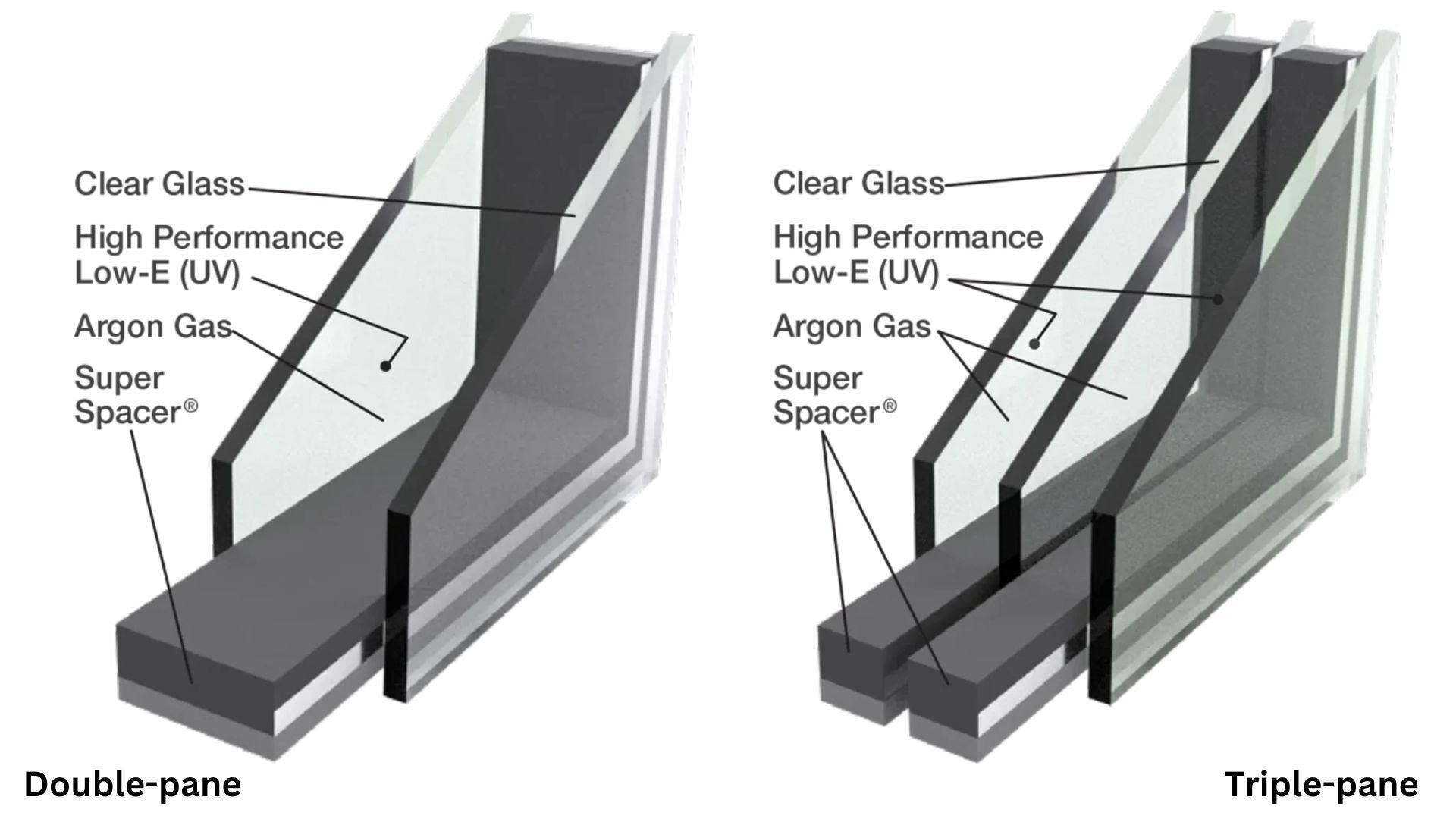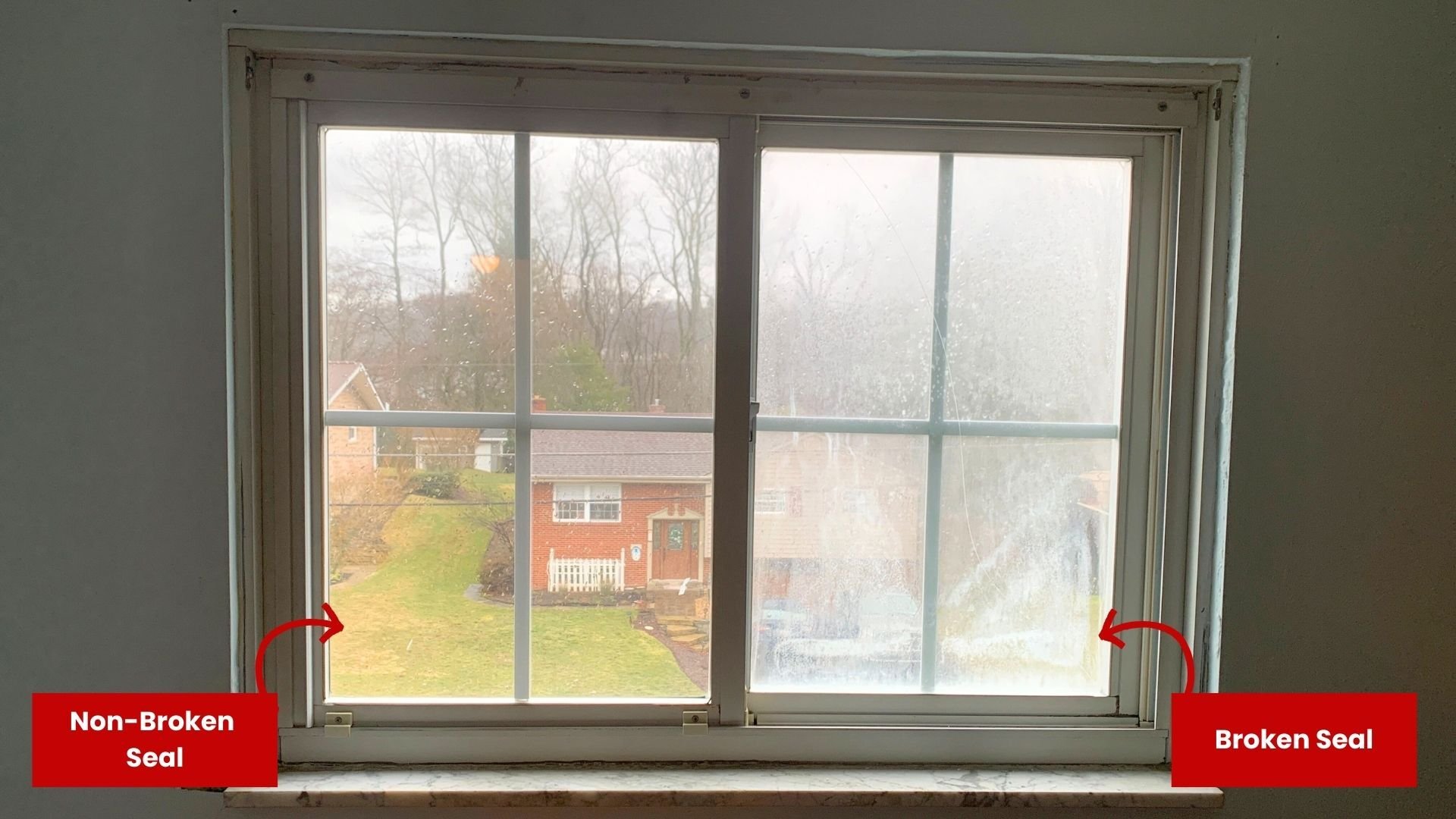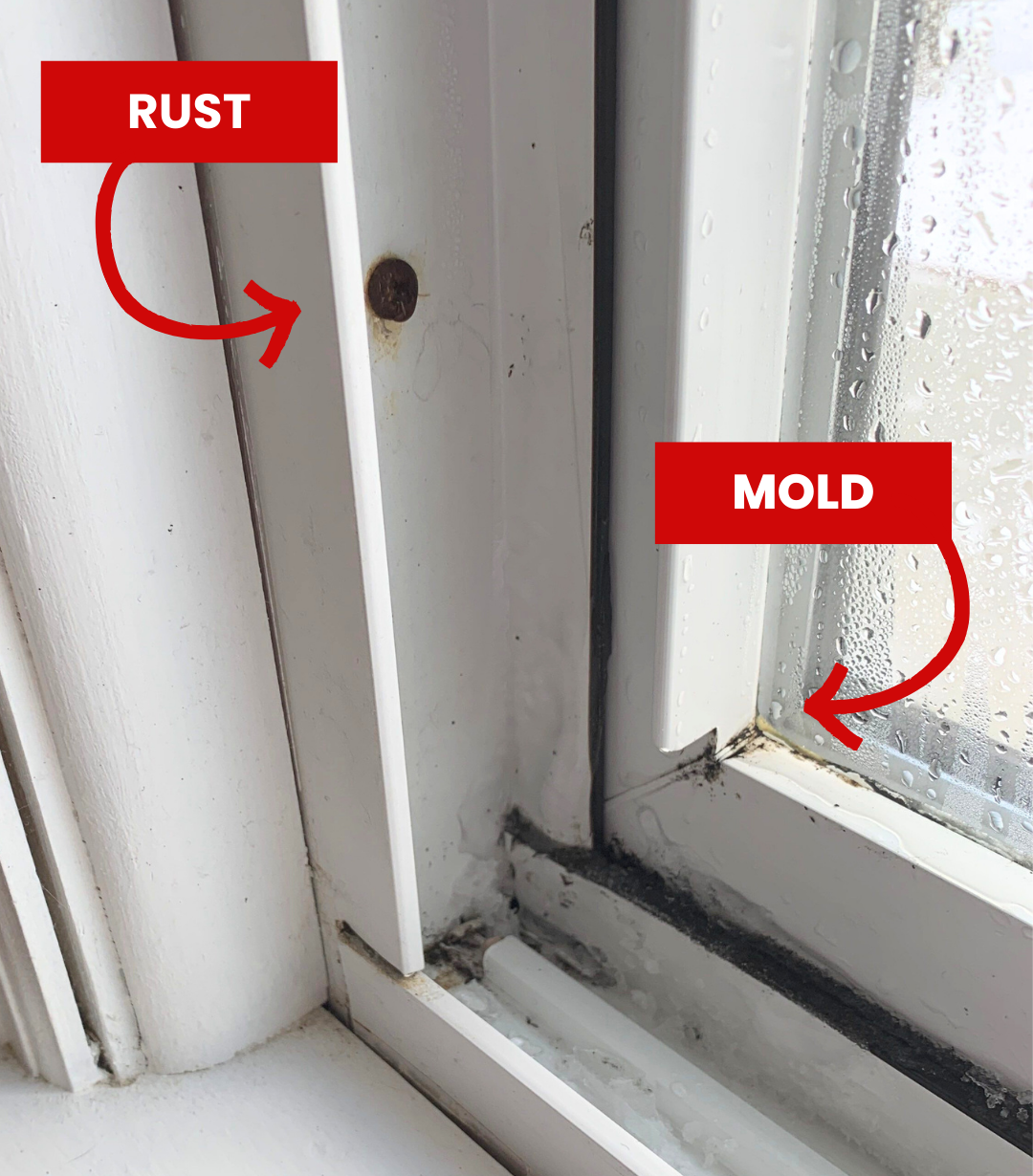Why Does Your Window Have Condensation Between the Glass?
April 9th, 2025
5 min read

Are your once-clear windows now clouded with foggy condensation? It’s frustrating to lose that beautiful view, and even more concerning to think about what might be happening inside your windows. Condensation between window panes isn’t just a cosmetic issue — it often points to a broken seal that could lead to energy loss, higher utility bills, and even mold growth.
At Energy Swing Windows, we understand how frustrating this can be — especially in a climate like Pittsburgh’s, where dramatic seasonal shifts and high humidity can wreak havoc on window seals. With over 25 years of experience helping homeowners resolve window issues, we know the causes of seal failures and how to address them.
In this article, we’ll explain why condensation forms between glass panes, what it means for your windows, and how you can get back to that beautiful view. By the end of this article you’ll understand what’s causing it, whether it’s fixable, and how to know if you need to replace the entire window or just the glass unit.
Why Is There Moisture Between My Window Panes (and What Should I Do About It)
You wake up and see a hazy, fog-like film trapped between the panes of your window. You try to wipe it off, but it’s not on the inside. It’s not on the outside. It’s in between, and that’s a problem.
That moisture isn’t just annoying, it’s a red flag that your window’s insulated seal has failed, and your energy efficiency is slipping away.
What’s Actually Happening Inside Your Windows
Modern double- and triple-pane windows are designed with an insulated glass unit (IGU), a sealed space filled with inert gas like argon or krypton. These gases act as invisible insulation, keeping your home cooler in summer and warmer in winter by slowing the transfer of heat.
But that only works if the seal remains intact.
Over time, the seal that holds this gas and keeps moisture out can weaken or break. Once that happens, outside air and humidity enter the space between the panes. That’s when condensation starts forming, and it’s no longer just a cosmetic issue.

Common Reasons Window Seals Fail
-
Age of the window (especially in homes 30+ years old)
-
Exposure to Pittsburgh’s harsh weather (freeze-thaw cycles, high humidity)
-
Frame shifting from settling or structural changes
-
Poor original installation or low-quality materials
-
Cracks in the glass or pressure stress over time
In Western PA, we see this often. Many homes built before 1990 now show seal wear, especially in rooms with strong sun exposure or poorly ventilated humidity.

Is Fog Between Window Panes a Cosmetic Issue or a Sign of Energy Loss?
At first glance, fog between your window panes might seem like a minor annoyance and just a visual blemish.
But make no mistake: it’s a sign your window is no longer doing its job.
When the seal on an insulated glass unit (IGU) fails, the gas between the panes (usually argon or krypton) escapes and moisture gets in. That foggy appearance? It’s actually humidity from outside air now trapped inside your window.
What That Means for Your Home:
-
Reduced insulation — heat escapes in winter, and comes in during summer
-
Higher energy bills — your HVAC system works harder to maintain comfort
-
Potential for mold or mildew — especially with long-term moisture exposure
-
Corrosion risks — internal rust can form on spacer materials and fasteners
-
Permanent haze — which can make your windows (and home) look neglected
In Pittsburgh, where we rely heavily on heat in winter and AC during humid summers, energy loss from failed windows adds up quickly, especially in older homes.
So while fogged windows might start as a cosmetic issue, they often lead to real efficiency, comfort, and health concerns if left untreated.
That’s why the next question is crucial: Can foggy windows be repaired? Or is replacement the better long-term fix?

Can Foggy Windows Be Repaired or Do They Need Replacing?
This is the question we hear most often and the answer depends on what’s actually failed and the condition of your window frame.
When condensation forms between panes, it usually means the seal of your insulated glass unit (IGU) has broken. Some companies offer a defogging service where they drill into the glass and remove the moisture. But these are short-term cosmetic fixes, not structural repairs.
So what are your real options?
| Solution | Average Cost | Lifespan | When to Choose |
|---|---|---|---|
| Defogging | $70–$150/window | 1–3 years | Temporary clarity boost |
| IGU Replacement | $150–$300 | 10–20 years | Good seals, frame still solid |
| Full Window Replacement | $400–$1,200+ | 20+ years | Damaged frame, poor insulation |
When You Should Replace the Entire Window
If your window has any of the following issues, it’s usually more cost-effective (and energy-efficient) to replace the whole thing:
-
The frame is warped, cracked, or water-damaged (learn more about how to repair a vinyl window frame)
-
Recurring seal failures or condensation problems
-
Drafts or water leaks around the sash or sill
-
Window is over 25–30 years old (lifespan varies by material)
Pittsburgh Tip: With our wet winters and humid summers, older wood and aluminum frames are more prone to warping and repeated seal breakdowns.
Not sure which option is right for your window? We’ll inspect it for free and walk you through all your choices. No pressure, just clarity.
How Can You Prevent Condensation From Forming Between Window Panes?
While no window lasts forever, there are steps you can take to prevent premature seal failure:
-
Ensure Proper Installation: Professionally installed windows are less likely to develop seal issues.
-
Conduct Regular Inspections: Check the seals and caulking for signs of wear or cracking.
-
Choose Quality Materials: Foam edge seals or “warm-edge spacers” reduce temperature-related stress on the seals. Better quality windows have higher quality sealed glass units.
Even with the best preventative measures, window seals can still fail over time. When that happens, deciding whether to repair or replace the window becomes the next step.
How Do You Know When to Replace vs. Repair a Foggy Window?
If you’re dealing with condensation between the panes, it’s important to consider a few factors before deciding what to do next:
-
Age of the Window: Older windows may not be worth repairing.
-
Frame Condition: Frames in good shape can often support a new glass unit.
-
Severity of the Seal Failure: If the failure is widespread, replacement may be the most practical option.
For newer windows with minor seal failure, replacing the glass unit might be a practical option. But for older windows or those with damaged frames, a full replacement is often the better choice.
You should consult with a window professional to help you determine the most cost-effective and lasting solution.
Protect Your Home’s Comfort and Efficiency
Dealing with condensation between window panes is more than just a cosmetic annoyance — it’s a clear indicator that your windows’ seals have failed. By understanding what causes this issue and the solutions available, you can make informed decisions about your home’s comfort and energy efficiency.
Remember, addressing this problem promptly can prevent further damage and reduce your energy costs.
The next step? Schedule an appointment with our experienced window professionals. We’ll evaluate your windows, discuss your options, and recommend the best solution for your home. Don’t wait — let’s restore your clear views and energy savings today.
Frequently Asked Questions About Foggy Windows
- Can I just clean the condensation out myself?
Unfortunately, no. The condensation is trapped inside the sealed space between your window panes — so regular cleaning won't reach it. This fogging is usually caused by a broken seal and requires professional repair or replacement of the insulated glass unit (IGU). - Is window defogging a real solution?
Defogging can remove the moisture and improve visibility temporarily, but it doesn’t fix the failed seal or restore insulation. It’s typically a short-term solution that might work if the frame is still in great shape and you're trying to buy time before a full replacement. - Do I have to replace the whole window if it’s foggy?
Not always. If the frame is still in good condition, you may be able to just replace the insulated glass unit (IGU). This is often a more affordable fix and restores both clarity and efficiency. However, if the frame is damaged, warped, or outdated, full replacement is likely the better investment. - How long should my windows last before fogging becomes an issue?
Most modern windows last 20–30 years, depending on quality, installation, and local climate. In Pittsburgh’s freeze-thaw cycles and humidity, seals may wear out faster — especially on older or builder-grade windows.
